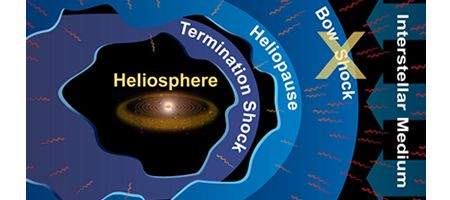Our sun is moving through the Milky Way more slowly than thought, new data from NASA’s Interstellar Boundary Explorer (IBEX) satellite shows.

And ‘bow shock’, generally believed to precede the heliosphere as it plows through tenuous gas and dust from the galaxy, now appears not to exist.
Ionized gas or plasma was believed to abruptly and discontinuously change density in the region of space that lies straight ahead of the heliosphere.
“The sonic boom made by a jet breaking the sound barrier is an earthly example of a bow shock,” says Dr David McComas, principal investigator of the IBEX mission.
“As the jet reaches supersonic speeds, the air ahead of it can’t get out of the way fast enough. Once the aircraft hits the speed of sound, the interaction changes instantaneously, resulting in a shock wave.”
But the new data on relative speed and local interstellar magnetic field strength shows that this isn’t happening to the heliosphere.
because it isn’t moving fast enough.It’s actually moving through the local interstellar cloud at about 52,000 miles per hour – roughly 7,000 miles per hour slower than previously thought, and slow enough to create more of a bow ‘wave’ than a shock.
“While bow shocks certainly exist ahead of many other stars, we’re finding that our sun’s interaction doesn’t reach the critical threshold to form a shock, so a wave is a more accurate depiction of what’s happening ahead of our heliosphere – much like the wave made by the bow of a boat as it glides through the water,” says McComas.
The team says it’s too early to say exactly what the new data means for our heliosphere. But, says McComas, “Already, we know there are likely implications for how galactic cosmic rays propagate around and enter the solar system, which is relevant for human space travel.”






